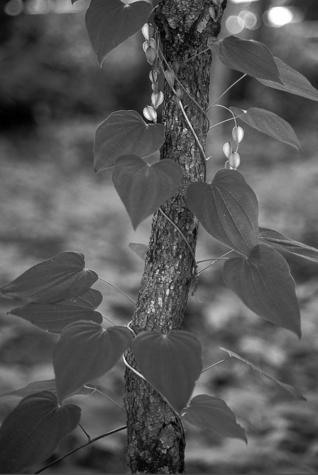WILD YAM
Botanical name: Dioscorea villosa
Synonyms: Colic root, rheumatism root
IN VITRO, ANIMAL, AND CLINICAL DATA
A 2001 double-blind placebo-controlled crossover study of the effects of a wild yam cream in 23 healthy women suffering from troublesome symptoms of menopause was conducted. After a 4-week baseline period, each woman was given active cream and matching placebo for 3 months in random order. Diaries were completed over the baseline period and for 1 week each month thereafter, and blood and saliva samples were collected at baseline and at 3 and 6 months, for measurement of lipids and hormones. The average age of the subjects was 53.3 *** 1.1 years and average time since last period 4.3 *** 0.9 years. At baseline, the average body mass index was 27.3 *** 0.8, cholesterol level 5.7 *** 0.2 mmol/L and follicle stimulating hormone (FSH) level 74.2 5.1 IU/L; estradiol levels were undetectable in the majority of cases. After 3 months of treatment, no significant side effects were reported with either active treatment or placebo, and there were no changes in weight, systolic or diastolic blood pressure, or levels of total serum cholesterol, triglyceride, high-density lipoprotein (HDL) cholesterol, FSH, glucose, estradiol, or serum or salivary progesterone. Symptom scores showed a minor effect of both placebo and active treatment on diurnal flushing number and severity and total non-flushing symptom scores, and on nocturnal sweating after placebo, but no statistical difference between placebo and active creams. A randomized, controlled trial of 13 menopausal women given two capsules three times daily for 3 months of an herbal combination containing wild yam root in doses lower than recommended, along with burdock root (Arctium lappa), licorice root (Glycyrrhiza glabra), motherwort (Leonurus cardiaca), and angelica root (Angelica archangelica) demonstrated statistically nonsignificant decreases in menopausal symptoms in the active treatment group. Diosgenin, a component of wild yam, has been shown in several studies to reduce total serum cholesterol levels, likely as a result of reduced intestinal cholesterol and an effect potentiated by taking the herb with vitamin C. No hormonal effects, including no changes in DHEA, estrogen, and progesterone levels, or FSH or LH levels, have been observed. In one study of ovariectomized mice receiving 20 to 40 mg/kg of diosgenin injected subcutaneously daily for 15 days, mammary gland epithelial stimulation was observed without progesteronic effects, however, the effects of oral wild yam on breast tissue have not been studied in animal or human trials.








